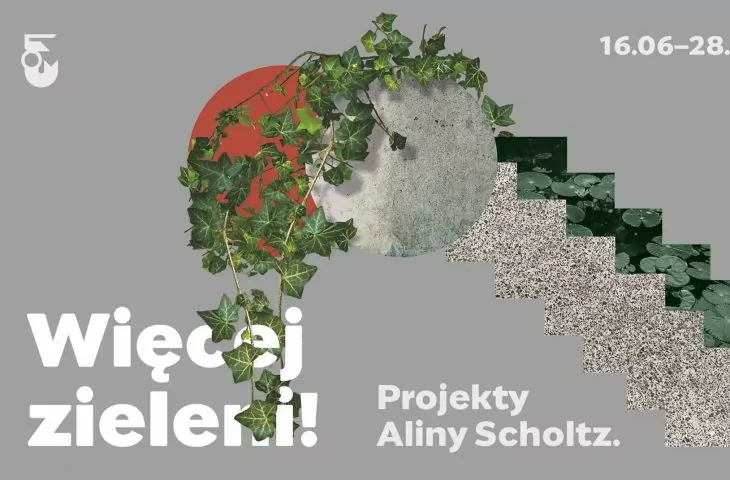Warsaw is considered one of Europe's greenest capitals, a status it gained after 1945. One of the authors of this transformation is Alina Scholtz, to whom the exhibition is dedicated by the Wola Museum, a branch of the Warsaw Museum. The exhibition "More Greenery! Projects of Alina Scholtz" will present the realizations of this pioneer of landscape architecture in Poland, responsible, among other things, for the post-war reconstruction of Warsaw's parks, squares and gardens. The exhibition, which we have covered under our patronage, is on June 16 this year.
"More Greenery! Projects by Alina Scholtz" is another exhibition that is part of a broader program of the Museum of Warsaw opening a discussion on how to take care of the sustainable development of the city and make it a friendly space for all residents. It also allows us to bring back to Warsaw an important female figure and to look at the known history of rebuilding the capital from a new perspective," says Dr. Karolina Ziębińska-Lewandowska, director of the Warsaw Museum.
The WZ route from Nowy Zjazd Street andthe fountain in the Central Park of Culture and Leisure in Warsaw.
© National Digital Archive
designer of warsaw's greenery
Alina Scholtz was the head of the Greenery Studio at the Capital Reconstruction Bureau, creator of park layouts and greenery surrounding new housing estates, such as the Szwoleżerów estate and Sady Żoliborskie. She is the author and co-author of such projects as the areas of the Służewiec Race Track and the Central Park of Culture (now the Edward Rydz-Smigly Marshal's Park). It is these key projects that we will be able to see at the exhibition at the Wola Museum, in addition to pre-war modernist gardens, the surroundings of the Polish embassies in China or Korea and the reconstructed greenery of the Saski Garden.
Alina Scholtz always designed keeping in mind the variability of greenery over time. Thanks to her ideas, in autumn children could collect chestnuts and rowan beads on the roads to school, and in May specially planted trees with red and white flowers reminded people of national holidays. Her projects continue to inspire the search for sustainable natural and urban solutions. They also provide tools for action in the face of the climate challenges we face.
Alina Scholtz is the only woman named in the numerous pantheons of "founding fathers" of landscape architecture
© heirs archives
pioneer of landscape architecture
Interestingly, although from its inception Polish landscape architecture was a heavily feminized field, Alina Scholtz is the only woman named in the numerous pantheons of "founding fathers" of the field. To this day, landscape architecture is sometimes treated as subservient to architecture and is often assigned a primarily "decorative" function. Such a hierarchical view means that also women designers in the "Greenery" department of the Bureau of Capital Reconstruction and the Urban Planning Bureau of Warsaw have been overlooked in subsequent studies of the postwar period, and many of them remain anonymous.
You can read about the awareness of the good that comes from the presence of greenery in the city and the problem of the omission of the architectural and landscape architecture profession from the public debate in Anna Cymer's column - We need Alina Scholtz of the 21st century.
Today, in the face of the climate catastrophe, we want to value the profession of landscape architecture. We are committed to disenchanting landscape architecture, perceived as designing decoration rather than fully functional elements of space. We want to value greenery as an indispensable - equivalent to buildings - element of the urban fabric," says Klara Czerniewska-Andryszczyk, co-curator of the exhibition.
Ewa Perlinska-Kobierzynska, curator of the exhibition adds:
The aim of the exhibition is also to reclaim Alina Scholtz for the history of architecture, the history of Warsaw, and to make the objects created by her be protected, just as architectural monuments are protected.
in the workshop of a landscape architect
Part of the exhibition, called WolaLab, was devoted to a thorough analysis of urban greenery. In the space of the laboratory, Scholtz's designs were decomposed into component factors: knowledge about the selection and use of plant material, landscaping, ways to use water. It will be here that you will be able to learn about the workshop of a landscape architect, understand the influence of vegetation on the microclimate, learn about the species of trees planted in Warsaw, design a green space on your own, or finally think about the ecological future of the city.
© Wola Museum
calendar and accompanying program of the exhibition
The exhibition is accompanied by lectures, debates and meetings, as well as walks and bicycle tours in the footsteps of Alina Scholtz. With its accompanying program, the Wola Museum encourages people to discover their neighborhoods and the green corners of Warsaw.
It is the parks and gardens that are places of relaxation and respite in the hustle and bustle of the city. Pandemic times have shown how important a role green spaces play in our lives. We want to show that this is not a coincidence - greenery in the city works when it is properly designed and cared for," says Konrad Schiller, head of the Wola Museum.
- The exhibition: "More Greenery! Projects by Alina Scholtz"
- duration: from June 16 to November 28 this year.
- address: Wola Museum at 12 Srebrna St. in Warsaw
authors of the exhibition
- curators: Klara Czerniewska-Andryszczyk, Ewa Perlińska-Kobierzyńska,
- research team: Natalia Budnik, Klara Czerniewska-Andryszczyk, Centrala Design Group (Małgorzata Kuciewicz, Simone De Iacobis), Ewa Perlińska-Kobierzyńska,
- exhibition design: Design Group Centrala,
- Through the eye of a landscape architect: Natalia Budnik,
- graphic design: Marta Caban.








































